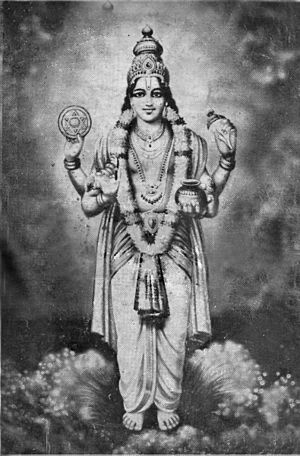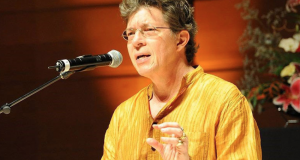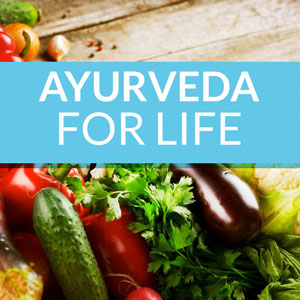No More PMS - The Ayurveda Way
Ayurveda has answers for everything, even PMS bloating, cramps, and mood swings. A healthy woman with well-balanced hormone levels doesn’t know what a PMS is. Ayurveda can help you join the circle of the lucky ones next month!
I first met Vaidya Vasudha at a workshop led by internationally known Dr Vasant Lad and she had a very welcoming, calming, motherly vibe. Later I found out that she is a graduate of R. A. Podar Medical College in Mumbai where she studied Ayurvedic Medicine along with Western Medicine, Pulse Reading and Sanskrit. In New York, she specializes in Women’s Health while motivating people to appreciate their health and providing effective but simple and affordable ayurvedic remedies.
Eager to learn more about the interconnection of women’s health and Ayurveda, I met with Vaidya in her small New York office. We discussed some sensitive but nevertheless important women’s health issues.
Nadya: What is the difference between the way modern medicine and Ayurveda look at women’s health?
Vaidya: Ayurveda doesn’t look at the disease in a vacuum. It looks at the entire organism, completely evaluating its inborn characteristics (dosha) and its current state (imbalances of dosha).
Prior to suggesting any remedy, an Ayurvedic practitioner will determine client’s body/mind constitution and then examine any current symptoms through the lens of the individual dosha. Every human being is unique according to Ayurveda and therefore recommendations will be slightly different and specifically customized for every individual.
Based on the individual dosha evaluation and its imbalance, practitioners can recommend simple dietary or daily routine changes such as adding more cooked nourishing dishes or having your biggest meal around noo that will alleviate most problems without drugs. It stands in opposition with Western doctors, who treat the symptoms without taking time to find out what cause the problem in the first place.
For example, if you come to your gynecologist with pain or cramps complaint, he is very likely to prescribe a form of painkillers. While, in Ayurveda we try to look at the reason, then resolve it by simple non-prescription drug methods so that the problem never returns. Another important difference between Ayurvedic approach and Western medicine is that Ayurveda helps the person to understand her body and the reason behind the problem. It gives a woman is better knowledge of her body and greater control over how she feels. In Ayurveda food, yoga, breathing exercises, and simple herbs are the major recommendations. All the options for treatment whether they are herbs or exercise or breathing are simple and affordable.
N: What causes PMS according to Ayurveda?
V: As an Ayurvedic practitioner, I don’t consider PMS a disease, it is a symptom of a doshic imbalance and it will be different in every woman. To find out what causes this particular imbalance, I would need to learn more the general habits of my client, her food habits, life style routine as all of these things are interconnected and influence women’s health.
Normally, it is a Vata or Pitta imbalance, it will vary individually. Pain, anxiety, depression, cramps, and bloated feeling are Vata imbalance symptoms. While acne, frustration, anger, a feeling a heat inside the body are Pitta imbalance. So treatment would be different for each type. N: What are some of the general rules that we can follow to prevent PMS from happening? V: As a general rule, diet is very important 1 week before the cycle. Try to avoid anything too cold, salty, refined sugar, and caffeine. Your diet should contain mostly warm and nourishing light dishes. Cooked and semi-cooked vegetable and lots of fruits is always good, just make sure not to mix them in one meal. It is best to follow your regular routine without adding anything new or extreme to your lifestyle. So if you exercise regularly, keep exercising at the same level of intensity, no need to significantly reduce or intensify the routine. Also, aim for a good restful sleep, it will keep Vata at bay. One last important thing to keep in mind is your digestion. Drink 8-10 glasses of water a day to detoxify your body.
N: It is interesting that you mention digestion. Why is it important for avoiding PMS?
V: Digestion is the cornerstone of health in Ayurveda. If your body stores toxins, you are more like to experience severe PMS symptoms. Water and lots of fiber are beneficial for keeping digestion healthy.
N: If a woman experiences severe PMS symptoms what can be done to alleviate them? You mentioned that there are some yoga asanas and breathing that Ayurveda can prescribe to fight off different ailments. What works during PMS?
V: Vajrasana or Thunderbolt pose is good to keep digestion healthy and prevent PMS symptoms. Vata types should focus on keeping their internal warmth. Sun Salutations, forward bends, child’s pose, and Rabbit are good asanas for Vata type PMS. They can also add alternative nostril breathing and Bhramri or Bramari (Bumble Bee) breath. Pitta types will benefit from side stretches that will reduce frustration and help create more space and openness; Cobra, Bow, and Camel poses. Pitta’s PMS yoga routine should start and end with a long Savasana to release all the tension and bring the attention internally. They should avoid Sun Salutations during this time and do a cooling Sheetali Breathing .
Related Articles
- Ayurveda & Dosha Types for Beginners (mindbodygreen.com)
- Ayurvedic Remedies for Arthritis (herbal-properties.suite101.com)
- The Use of Turmeric in Ayurvedic Medicine (brighthub.com)










